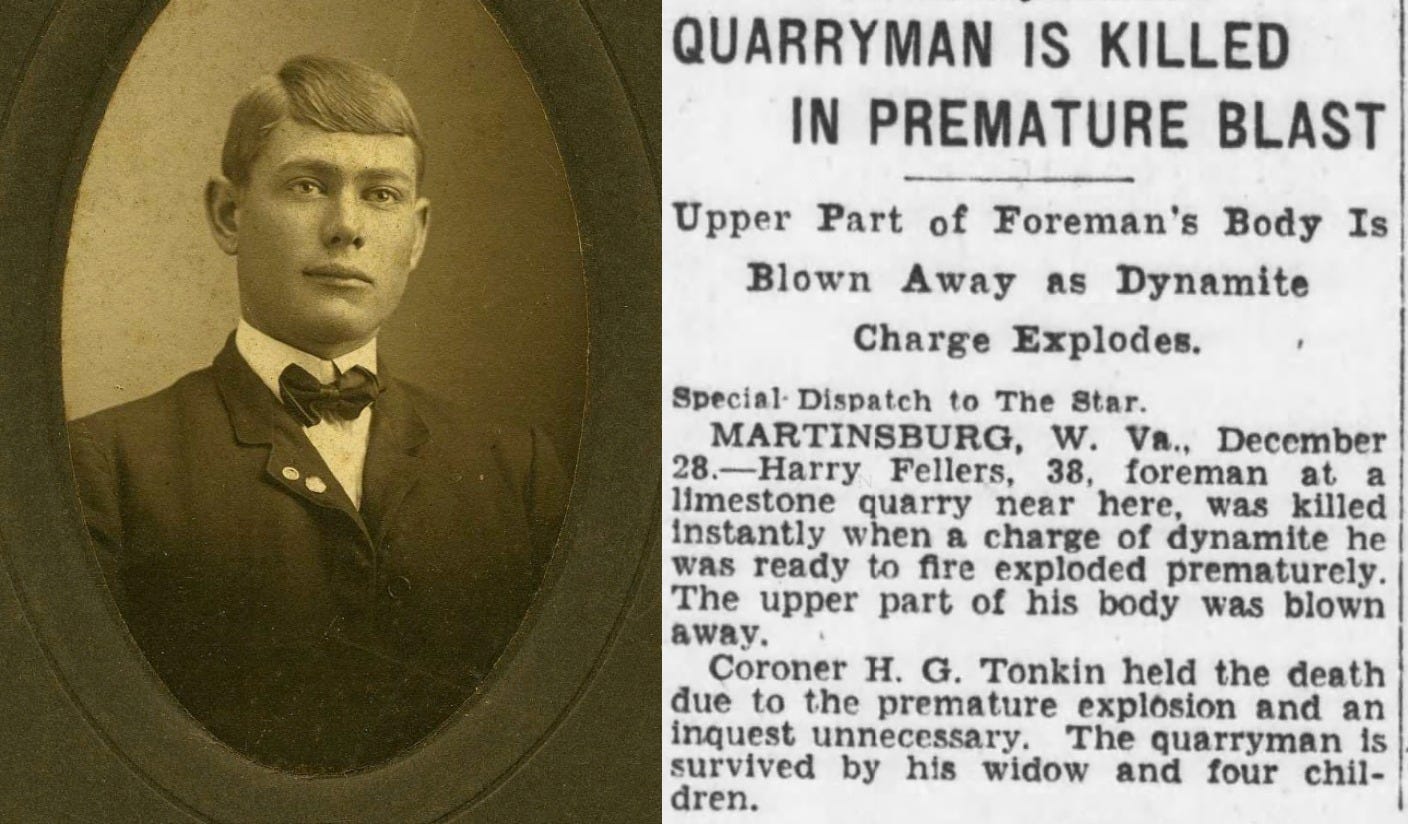A Martinsburg widow’s strength: how Bessie Fellers rebuilt after unimaginable loss
The life of a Martinsburg family offers a poignant glimpse into the resilience, hardship and evolving family dynamics during the early 20th century.
A Martinsburg family lost their husband and father just after Christmas 1929 when a dynamite blast killed him on the job at the city's limestone quarry.
George Henry "Harry" Fellers, 38, was killed instantly when the charge exploded prematurely. As a quarry foreman, he held a position of responsibility in a dangerous industry, and paid for it with his life.

One of the family's four daughters, Elsie, had died in Kings Daughters Hospital a year earlier of scarlet fever. At the time, this was a common and often deadly childhood illness because penicillin wasn’t widely available until the 1940s. Elsie had just turned 7.
The timing of Harry’s death — right after Christmas and just a year after Elsie’s death — and the manner of it (a tragic workplace accident) was undoubtedly extremely traumatic and left a significant emotional and financial void in the family.
The toll that these tragedies must have taken on Harry's wife, Bessie, is unimaginable.
Bessie had also lost a sister when she was 17 and her mother when she was 21. Now she was a widow at age 38, with three surviving daughters to raise alone.
Bessie rented a home at 116 South Raleigh Street. In 1930, her daughter Edna was 18, Beatrice was 16, and Bessie Jr. was 6. Bessie wasn't working, but Edna had a job at the hosiery mill. To make ends meet, Bessie had taken in a boarder, a young man named Charles Weller, 20, who worked as a clerk at a local grocery store. It was a practical decision that shows Bessie’s determination to support her family after losing her husband.
Love quickly blossomed between the young boarder and the eldest daughter of the house.
Keep reading with a 7-day free trial
Subscribe to They Lived In Berkeley County to keep reading this post and get 7 days of free access to the full post archives.



